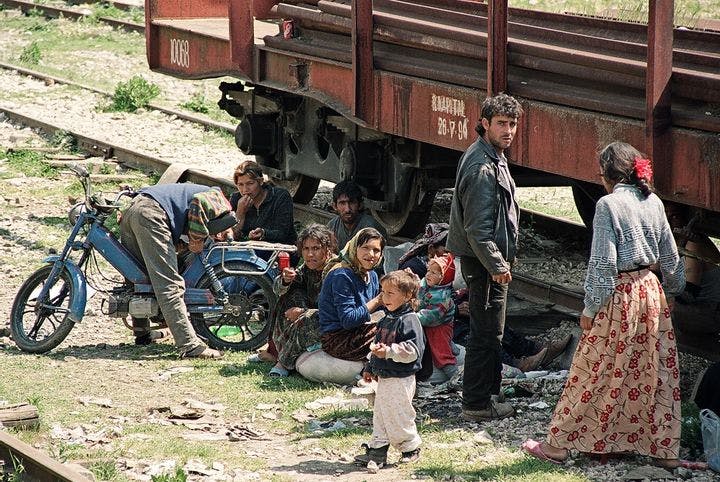Fall 2010
Separate and Unequal in Eastern Europe
– The Wilson Center
African Americans and the Roma of Eastern Europe may live thousands of miles apart, but their histories have taken remarkably similar paths.
African Americans and the Roma of Eastern Europe may live thousands of miles apart, but their histories have taken remarkably similar paths. Both groups suffered centuries of slavery, were emancipated in the middle of the 19th century, and endured decades of poverty and segregation. But around World War II, their stories diverge. In the United States, the civil rights movement began to take shape, while in Europe, the Nazis killed as many as 1.5 million Roma in the Holocaust. Under communism, Roma got jobs and apartments, but they continued to receive inferior educations in segregated schools. When the Berlin Wall fell in 1989, they were ill prepared to work in a capitalist economy and have since fallen into “staggering” poverty. In some Roma areas, the unemployment rate is 100 percent.
The Roma (also known as Gypsies, though that term is no longer widely used) need to take a page from the civil rights movement’s playbook, writes Jack Greenberg, one of the lawyers who argued Brown v. Board of Education and the former head of the NAACP Legal Defense Fund. In 2003, Roma leaders invited him to Eastern Europe to help them figure out how to desegregate schools. But Greenberg found that the Roma lack the makings of a political movement. Missing were the churches, institutions of higher education, and organized civil-society groups—features of American society that made the civil rights movement not only possible but successful.
Roma arrived in Eastern Europe from northern India perhaps as early as the fourth century. Today, they are one of the fastest-growing groups in Eastern Europe. In the four countries Greenberg studied, Roma make up as little as two to three percent of the population (Czech Republic) to as much as eight to 10 (Bulgaria). Hungary and Romania fall somewhere in between, though the data are rough approximations. Everywhere, Roma are poor and uneducated. Maybe as little as one percent of Roma have a college education, and 70 to 80 percent have not completed primary school.
European law prohibits discrimination against the Roma, and courts at both the European and national levels have ruled in favor of Roma in individual anti-discrimination cases. But the verdicts have been toothless. National authorities, despite passing desegregation laws, have shied away from enforcing them, in part because of a residual, postcommunist resistance to centralized power.
Greenberg says that without a Roma rights movement, there is little hope of achieving integration. Roma scarcely participate in politics at all. There is only one Roma member of the European Parliament, and Roma across the board vote in very low numbers. To complicate matters, some Roma don’t support desegregation, fearing that it will lead to assimilation and the loss of their cultural heritage. It’s time to put an end to this, says Greenberg. “Europe has dithered long enough with one of the gravest humanitarian and economic crises of our time.”
THE SOURCE: “Report on Roma Education Today: From Slavery to Segregation and Beyond” by Jack Greenberg, in The Columbia Law Review, May 2010.
Photo courtesy of Flickr/Cuito Cuanavale
